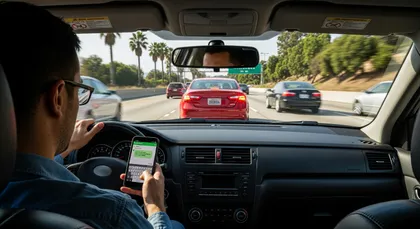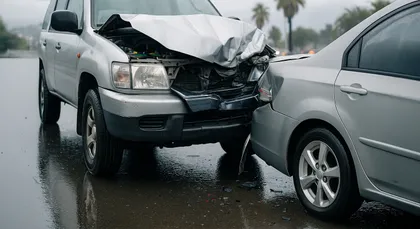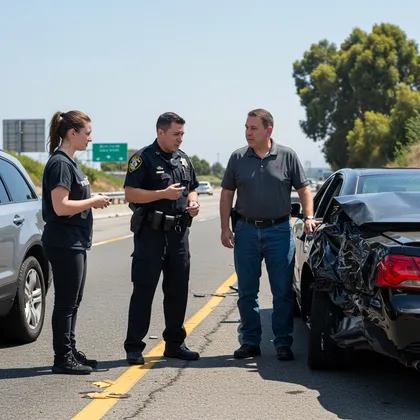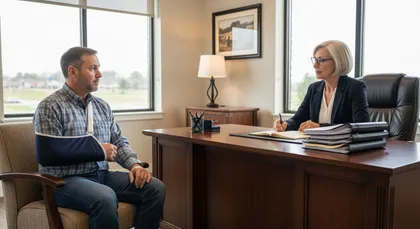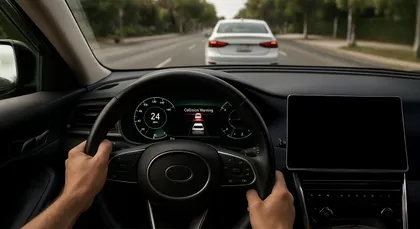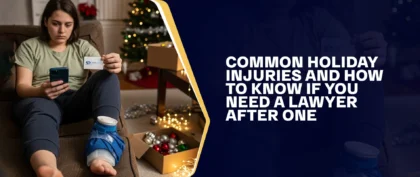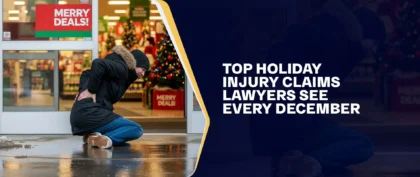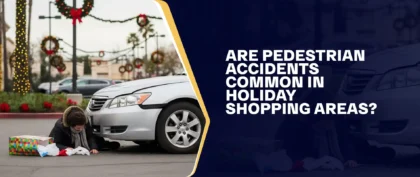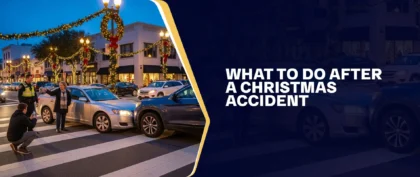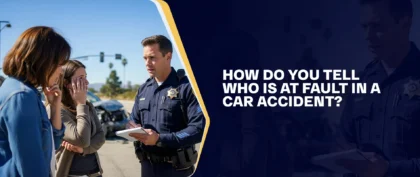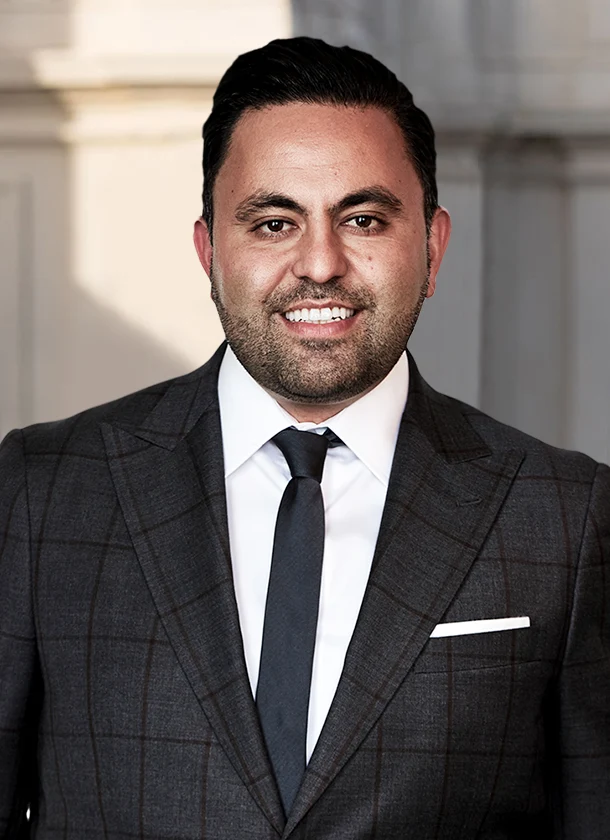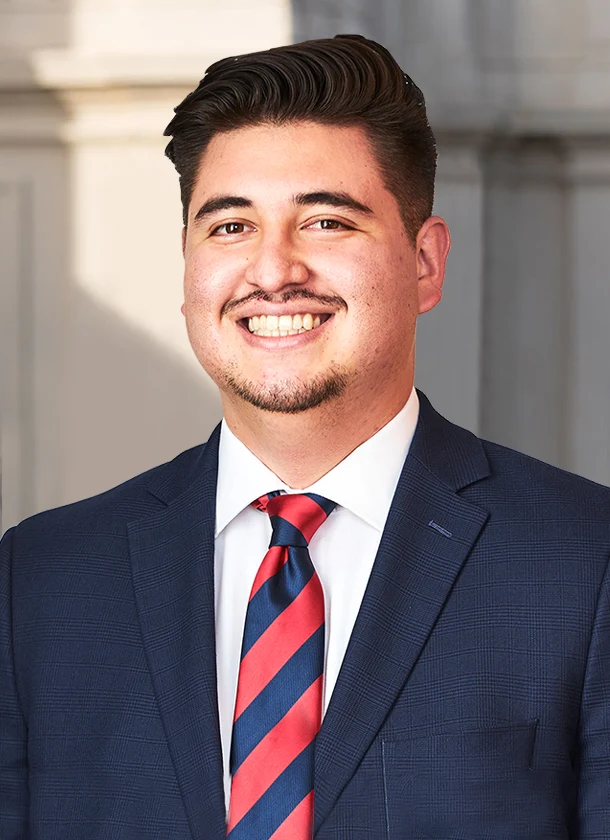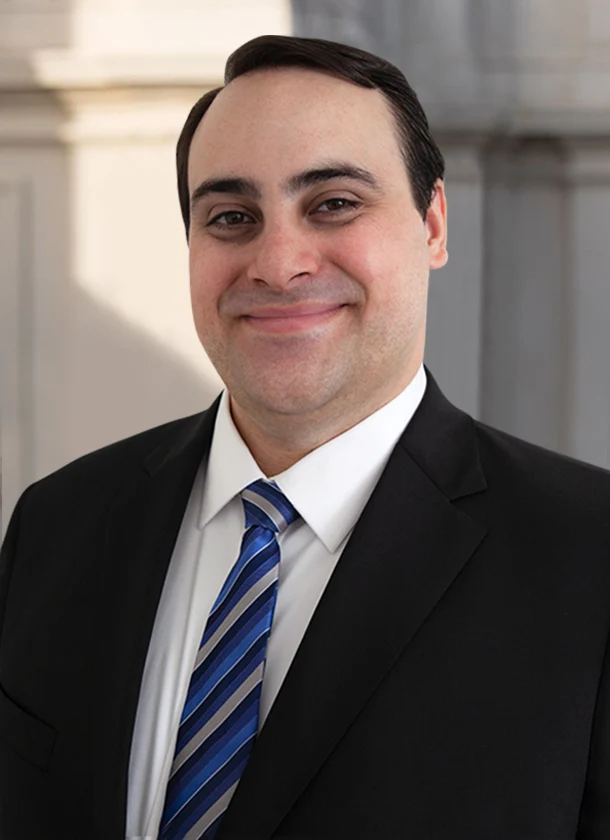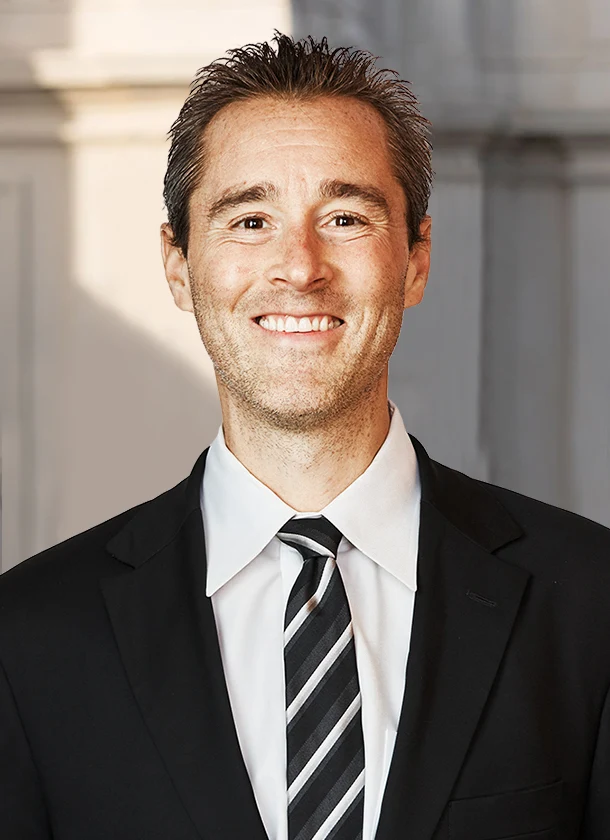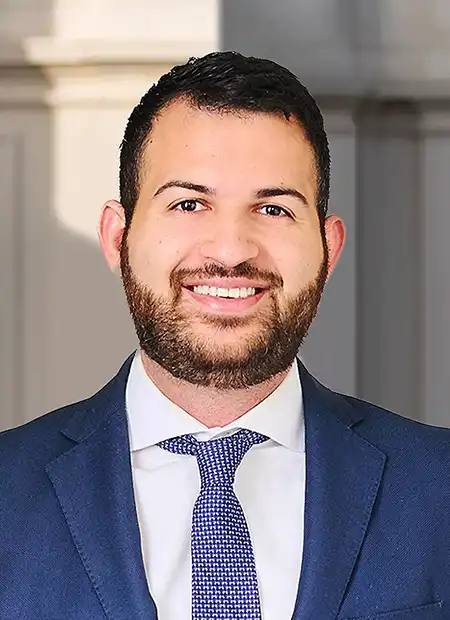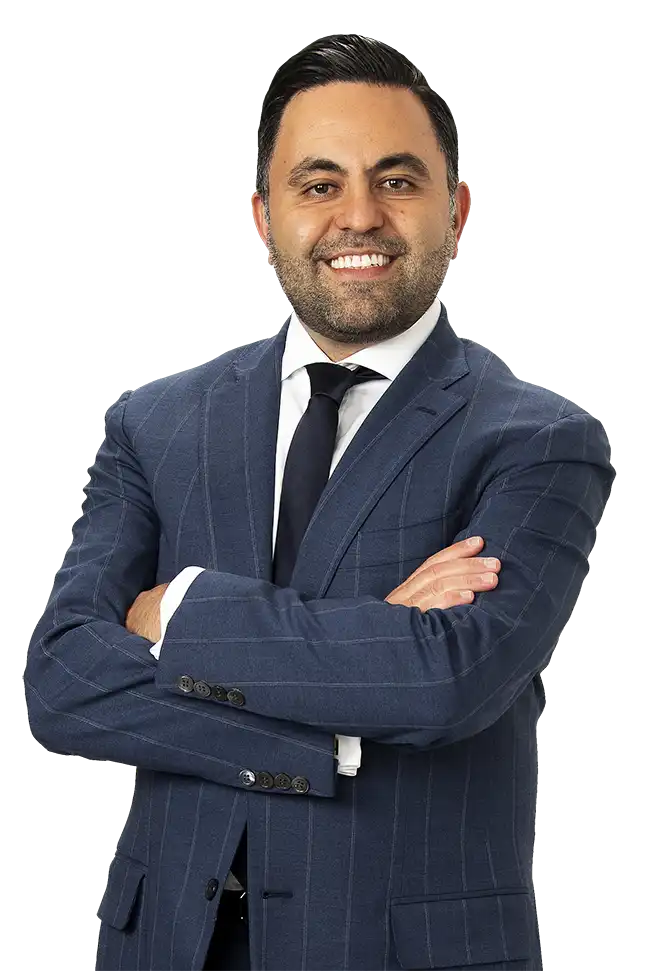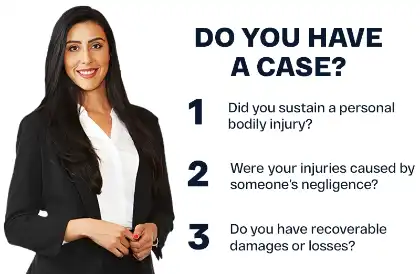TL;DR: Distracted driving is the leading cause of rear-end collisions. Common distractions like texting, eating, or adjusting the GPS take a driver’s eyes and mind off the road, reducing reaction time. In 2023, distraction-related crashes killed 3,275 people nationwide. If a distracted driver rear-ended you, call Arash Law at (888) 488-1391 for a free consultation.
Table of Contents
The most common cause of rear-end accidents is distracted driving, where a driver fails to notice slowing or stopped traffic. A rear-end collision can happen in an instant if the driver behind you looks at a phone, eats, or adjusts music instead of paying attention to the road. These split-second lapses are dangerous because they leave little to no time to brake.
Distraction comes in three main forms: visual, manual, and cognitive. When rear drivers look away from traffic, take their hands off the wheel, or let their minds wander, they increase the risk of a sudden rear-end collision. According to the National Highway Traffic Safety Administration (NHTSA), distraction was a contributing factor in 3,275 deaths in 2023. Many of those crashes involved vehicles striking another from behind.
California law prohibits drivers from holding or using handheld devices while driving, but distracted driving remains a top factor in rear-end crashes. Drivers between 16 and 24 face the highest risks, though anyone can cause or suffer harm when attention shifts away from the road. If you’ve been hit from behind by a distracted driver, an experienced traffic accident lawyer can review your options for recovery.
Here are key facts about distracted driving and its role in rear-end collisions:
- Distracted driving is the main cause of rear-end collisions.
- Common distractions: phones, eating, music, or passenger conversations.
- Distractions reduce focus and reaction time behind the wheel.
- NHTSA reports rear-end crashes account for 28% of accidents, with driver inattention causing 60% of them.
- California law bans handheld phone use while driving.
- Car crash attorneys can explain your legal recovery options.
Even a brief distraction can lead to serious injuries. Just one missed brake light or red light can leave the driver behind with no time to stop.
If a distracted driver rear-ends you, our car accident lawyers at AK Law can review your case and explain your options. We handle the legal side and deal with the insurance company so you can focus on healing. Call us at (888) 488-1391 for a free, no-obligation case review.
Distracted Driving: What You Need To Know
Staying alert while driving can prevent serious injuries and save lives. Yet, in today’s world, distractions are everywhere, especially with constant phone use. While phones and GPS devices are among the most common distractions, even everyday actions like talking to passengers or eating can shift your attention away from the road.
In 2023, NHTSA reported that 3,275 people died in distraction-related crashes. That number is slightly lower than the 3,315 deaths reported in 2022, as per the National Safety Council (NSC). Although the data doesn’t break down how many rear-end crashes there were, you may want to know what percentage of crashes are rear-end to see how common these accidents really are.
How Distracted Driving Causes Rear-End Crashes
Rear-end crashes can happen in an instant, often because the driver behind is distracted. A glance at a phone, reaching for something, or simply zoning out can cause them to miss signs that traffic is slowing or stopping.
What To Do After A Rear-End Crash?
Rear-end collisions can happen in an instant. It’s important to know what to do if someone rear-ends you. Here’s a quick checklist of the recommended steps:
- Stay calm and ensure safety.
- Report the accident.
- Document the scene.
- Seek medical attention.
- Notify relevant parties.
- Consult a lawyer.
You may be following traffic laws, slowing down for a red light, or waiting your turn. However, if the driver behind you isn’t paying attention, they may not hit the brakes in time.
Distracted driving falls into three types. An experienced distracted driving accident lawyer can explain how each may apply if you were hurt in a rear-end crash.
Visual Distractions
Many rear-end crashes happen because the person behind wasn’t watching the road. A glance away can cause them to miss brake lights or a stopped vehicle ahead. Common visual distractions include:
- Fixing hair or makeup in the mirror.
- Looking at billboards.
- Staring at another crash on the road.
- Reaching down to grab a dropped item.
- Reading a phone, a printed map, or a newspaper.
Manual Distractions
Safe driving requires quick and steady control. When a rear driver is busy doing something else with their hands, they may not react fast enough to avoid hitting the car in front. Examples include:
- Eating or drinking.
- Adjusting the radio, air conditioner, or GPS.
- Lighting a cigarette.
- Holding a phone during a call.
Cognitive Distractions
Even if a driver’s eyes are on the road and hands on the wheel, their thoughts might be elsewhere. Mental distractions reduce awareness and slow reaction time. Here are a few scenarios:
- Daydreaming or zoning out.
- Getting caught up in a conversation.
- Driving while upset, angry, or stressed.
Common Locations Where Rear-End Collisions Occur
Rear-end crashes often happen where vehicles slow down or stop. If the person behind you isn’t paying attention, they may not brake in time, leaving you injured and your car damaged.
- Traffic Signals & Stop Signs — Rear-end crashes often happen at lights or signs when a driver fails to notice that you’ve stopped. It may be helpful to know the safe distance you must maintain from the car in front of you at a light.
- Heavy Traffic — In stop-and-go conditions, a distracted driver may follow too closely and hit you when traffic slows suddenly.
- Highways & Freeways — Sudden slowdowns from congestion or roadwork can lead to high-speed rear-end crashes if the driver behind isn’t focused. These risks increase when large vehicles are involved. You may wonder why big rig trucks always get rear-ended in stop-and-go traffic or on freeways.
- Merge & Exit Ramps — Speed changes, merging, and last-minute decisions can cause rear-end impacts in these high-pressure zones.
- School Zones — Drivers must slow down for children and the posted limits. If the driver behind you isn’t paying attention, they may crash into your vehicle.
Distracted Driving Laws In California And Their Role In Rear-End Collisions
Under California law, it’s illegal to hold or use a phone while driving unless it’s hands-free. This includes:
- Talking on the phone, even for a few seconds.
- Texting or scrolling through messages.
- Using apps, including maps, social media, or music.
Phones must be mounted and used in hands-free mode. If a driver causes a crash while using their phone, they may be held legally responsible.
To prevent these kinds of crashes, the state launched safety campaigns like:
- “Put Your Phone Down. Just Drive”
- “Silence the Distraction”
These efforts focus on younger drivers, who are at higher risk of distracted driving. Drivers aged 16 to 24 are approximately 2.43 times more likely to be involved in a fatal crash than drivers aged 25 to 69, based on crash rates per 100 million miles traveled.
Parents can reduce the risks by talking to their teens about safe driving habits. This ultimate teen-driving safety guide offers tips and practices for young drivers based on NHTSA recommendations.
Other Causes Of Rear-End Collisions
Here are other careless actions or unsafe conditions that may lead to rear-end crashes:
- Tailgating
- Speeding
- Drunk driving
- Drowsy driving
- Dangerous road conditions
- Poor weather conditions
- Auto defects
- Brake failures
These factors put front drivers at risk, especially when there’s not enough time or space to stop safely.
When someone hits you from behind, the impact can cause many different injuries, even at low speeds. Some of the most common bodily injuries from rear-end crashes include:
- Neck injuries
- Whiplash
- Back injuries
- Brain injuries
- Broken bones
- Spinal cord injuries
If you were hurt in a crash because another driver acted carelessly, our Los Angeles rear-end collision lawyers can look into the cause and support your claim. A collision lawyer can look into the cause of the crash and collect evidence, as well as support your claim while you focus on healing.
Recommended Steps To Take If You Get Rear-Ended Due To Distracted Driving
Getting hit from behind because another driver was distracted can leave you feeling shaken, hurt, and unsure of what to do next. Taking these recommended steps after the crash can protect your health, your rights, and your eligibility to recover compensation.
Step 1: Prioritize Your Safety
The first few moments after the crash are crucial for protecting yourself and others from further harm. Stay calm and take a quick look around at the immediate surroundings.
- Check for Injuries — Assess yourself if you feel dizzy, sore, or in pain. Even minor aches could mean something’s wrong. Then check your passengers, if any. Ask if they’re okay. Call 911 if anyone is injured.
- Move to a Safe Location — If your car still runs and you can still drive, carefully steer it out of traffic. Pull over to the shoulder or side of the road to avoid a second accident. If you can’t move the vehicle, stay inside and wait for help.
- Turn on Hazard Lights — Switch on your hazard lights right away. The blinking lights warn other drivers that something’s wrong and make it safer for you to pull over or handle the situation.
Step 2: Call The Authorities
Once you’re in a safe spot, report the crash. Having an official record may assist with insurance and legal matters later on.
- Report the Accident — Contact emergency services or the police to report the crash, even if the visible damage appears minor. A police report may support your insurance or legal claim.
- Cooperate with the Officer — When the officer arrives, answer their questions clearly. Explain what you saw and what happened. Share only the facts of the accident.
- Request a Copy of the Report — Ask how to get a copy of the police report. This report may prove that the other driver’s distraction caused the crash.
Step 3: Document The Accident Scene
Before talking to the other driver, take a few minutes to look around and gather important details.
- Take Photos & Videos — Take photos of both vehicles, visible damage, and road debris. Capture the full scene, traffic signs, skid marks, road conditions, and nearby landmarks. A short video walking around the area can also be helpful.
- Exchange Information — Ask the other driver for their name, phone number, driver’s license, and insurance details. Write down their license plate number as well.
- Get Witness Details — If someone saw the crash, ask for their name and contact number. Their statement may provide insight into the facts of the accident.
Be thorough and deliberate when documenting the scene. A detailed record of events can help prove fault or support your side of the story. The more details you gather, the better prepared you’ll be for the future. Our traffic accident lawyer may be able to use the evidence you provided to determine rear-end collision liability.
Step 4: Get Medical Attention
You may not feel pain right away, but that doesn’t mean you’re not injured. Some injuries from rear-end crashes take time to show up. It’s important to go to the hospital as soon as you can. With diagnostic tests, doctors can spot hidden injuries like whiplash, back strain, or a concussion.
After that, you need to:
- Watch for Delayed Symptoms — Headaches, neck pain, dizziness, or numbness might appear hours or days later. These signs could mean a more serious problem.
- Follow Your Treatment Plan — Stick to your doctor’s advice and attend follow-up visits. Doing so may improve your healing and show a clear connection between your injury and the crash.
- Keep All Medical Records — Save every report, receipt, and note from your doctor. These documents provide a record of your medical care and may support your insurance or legal claim.
Step 5: Notify The Appropriate Parties
Make sure to inform the right people after the accident. Reporting it quickly can help prevent delays and protect your ability to recover compensation.
- Contact Your Insurance Provider — Let your insurer know about the crash and share the basic facts. Your policy may cover some of your losses in the event that the at-fault party can’t.
- Notify Your Employer — If you miss work because of the crash, tell your employer. Ask for written proof of the time you were out. This documentation may support lost wage claims or disability benefits.
- Keep a Record of Any Correspondence — Write down who you spoke to, when you spoke to them, and what you talked about. Keeping a record can prevent confusion or disputes later.
Step 6: Consult A Rear-End Accident Lawyer
A distracted driver hitting you from behind may seem like a clear case, but proving fault and getting compensation isn’t always easy. A car accident lawyer can:
- Explain Your Rights — They can walk you through your options and what the law says about your case.
- Gather Additional Evidence — An accident lawyer can collect additional evidence to support your claim, such as:
- Video footage
- Black box data
- Skidmark analysis
- Photographic evidence
- Cell phone records
- Medical records
- Handle Insurance Talks — Speak on your behalf with the insurance company and help you avoid statements that may complicate your case.
- Establish Liability — If the evidence points to negligence, your accident lawyer may build a case showing that the other driver:
- Owed a duty to drive safely and follow traffic laws.
- Broke that duty by driving while distracted.
- Caused the crash through their careless actions.
- Left you with injuries, financial losses, and other harm.
- Handle Legal Deadlines — They can assist you in meeting crucial deadlines, like the statute of limitations, so your claim stays on track. Missing a legal deadline could result in losing your right to file a claim or lawsuit.
Speak with a car accident attorney who works on rear-end incident cases. They can explain your rights and what legal steps may apply to your case. Additionally, they may know how to prove distraction caused the accident depending on the available evidence.
Frequently Asked Questions On The Most Common Cause Of Rear-End Collisions
Below are answers to some of the most common concerns people have after a rear-end crash. If you need more guidance or don’t see your question listed, you can contact Arash Law.
Are There Apps That Help Prevent Drivers From Getting Distracted By Their Phones?
Yes, some apps block calls, texts, and notifications while someone is driving. Some even send automatic replies to let people know the driver is busy. These apps reduce distractions that often lead to rear-end collisions and other serious crashes.
Do Newer Cars Have Features That Can Prevent Distracted Driving Accidents?
Many newer vehicles now come with built-in safety systems that react when a driver isn’t paying attention. Some of these include:
- Forward-Collision Warning — Alerts when the car gets too close to another vehicle.
- Automatic Emergency Braking — Applies the brakes if it senses a crash and the driver doesn’t respond.
- Lane-Departure Warning — Warns when the car drifts out of its lane.
- Lane-Keeping Assist — Helps steer the car back into its lane if the driver doesn’t react.
These technologies can reduce the risk of accidents, but they don’t replace the need for a focused, alert driver. If someone chooses to ignore the road, even with these systems in place, others can still get seriously hurt. Victims of distracted driving crashes often suffer painful injuries because the rear driver wasn’t paying attention.
What Can I Do To Avoid Getting Rear-Ended?
You can’t control whether the driver behind you is distracted, but you can take steps to prevent rear-end crashes. These simple driving habits can make it easier to avoid getting hit from behind, especially in heavy traffic or sudden stops:
- Let Tailgaters Pass — If someone is following too closely, change lanes or slow down slightly so they can safely pass instead of riding your bumper.
- Check Your Mirrors Often — Keep an eye on the road behind you, especially when you’re slowing down or stopping.
- Brake Slowly — Give drivers behind you time to react by slowing down gradually at lights, signs, and traffic jams.
- Leave Room at Stops — Leave enough space in front of your car so you can steer away and reduce the chance of a pile-up if someone rear-ends you.
- Use Your Turn Signals Early — Let other drivers know what you’re planning so they have time to adjust.
- Know Your Blind Spots — Use mirrors and cameras to stay aware of nearby vehicles, especially when changing lanes or merging.
- Avoid Getting Boxed In — Keep enough space around your vehicle so you have room to move away if traffic suddenly changes.
Is A Rear-End Collision Always The Rear Driver’s Fault?
In California, the rear driver is usually presumed to be at fault in a rear-end crash. The state’s vehicle code states that “drivers shall not follow another vehicle more closely than is reasonable and prudent.” Therefore, they must keep a safe distance and be ready to stop if traffic slows.
However, there are exceptions. The front driver’s actions may contribute to, or even cause, the collision in certain situations:
- Sudden, Unsafe Stops — Stopping without reason or warning in moving traffic.
- Brake Failure — Driving with known brake issues or poor vehicle maintenance.
- Reversing Without Warning — Backing up unexpectedly, such as at a stop sign or light.
- Road Rage or Brake Checking — Intentionally slamming the brakes to confront or scare the driver behind.
- Pulling In Without Enough Space — Merging or changing lanes too closely in front of another vehicle.
- Disabling Hazards — Stopping a disabled vehicle without hazard lights or warnings.
While the rear driver is often presumed to be responsible, fault in rear-end accidents is not always clear-cut. In many at-fault states, comparative negligence laws assign fault to each party based on their actions. When both drivers contribute to the crash, the law reduces compensation according to each party’s percentage of fault.
California applies a pure comparative negligence rule. Even if the front driver shares some responsibility, they can still recover damages. For example, if the court awards $100,000 and finds the driver 20% at fault, they would receive $80,000. Since rear-end crashes often involve shared fault, some insurance companies may try to limit payouts by shifting blame.
So, if you are asking, “Who is at fault in a rear-end collision in California?” The answer may not always be as straightforward. It may depend on the available proof. An experienced motor vehicle accident attorney can evaluate the evidence and help you determine who should be liable. Seeking free accident lawyer advice may help in more complicated situations.
What Happens If Someone Rear-Ends My Car And Drives Off?
If someone rear-ended your car and drove off, you can still seek compensation through your auto insurance. This is possible with uninsured/underinsured motorist (UM/UIM) coverage. This coverage protects you if the at-fault driver is unknown or lacks enough insurance. In a hit and run, the law considers the driver “uninsured” because no one can identify them or verify their insurance.
Often, rear-end collisions leave clear evidence of damage that proves a crash happened. After you report the hit and run to law enforcement and file a claim with your insurer, your UM/UIM policy may cover:
- Medical expenses, like hospital bills and follow-up care.
- Lost wages if injuries prevent you from working.
- Pain and suffering due to physical or emotional trauma.
- Vehicle repairs or replacement for damage.
- Long-term rehabilitation or disability support.
It’s crucial to report the accident right away to the police and your insurance company. Most policies require prompt notice for UM/UIM claims, and delays can hurt your chances of getting compensation. Collect details such as the time, location, vehicle description, and contact information for witnesses to support your case.
If you’re unclear about how your policy works or have issues with your insurer, consider consulting a hit-and-run accident attorney to understand your options better.
What Are The Things That Might Jeopardize My Rear-End Accident Claim?
If a distracted driver rear-ended you, your next steps can affect whether you receive fair compensation. Recognizing the common pitfalls can help you protect and support your claim:
- Admitting Fault — When speaking at the scene, stick to the facts. Even polite remarks like “I’m sorry” or uncertain statements about fault can be misinterpreted or used against you later. Describe what happened honestly, but avoid making guesses or assigning blame.
- Delaying Medical Care — Seeing a doctor as soon as possible is important for both your recovery and your case. Delaying treatment can worsen your injuries and make it harder to prove they came from the accident.
- Talking Too Much to Insurance — When talking to an insurance company, share only the essential details. Avoid providing long explanations, personal opinions, or speculation. Overexplaining creates inconsistencies that insurance companies may use to challenge your claim.
- Signing Without Legal Guidance — If an insurance company gives you documents to sign, review them with a qualified car accident lawyer. Reviewing them can help you avoid giving up important rights or settling for less than you may be entitled to receive.
How Long Do I Have To File A Lawsuit Involving Rear-End Accidents?
There are different time limits for filing lawsuits in the U.S. These deadlines are called the statute of limitations.
In California, you have two years from the date of the accident to file a lawsuit involving rear-end collisions. If you miss this deadline, you’ll lose your right to take legal action.
Some exceptions can pause or extend the deadline, known as “tolling.” Here are a few examples:
- Minors — If the injured person is under 18, the clock doesn’t start until they turn 18. A parent or guardian can file for them earlier.
- Mental Incapacity — If the person was mentally unable to understand what happened when they got hurt, the time limit may be paused until they regain mental capacity.
- Government Claims — If your claim involves a government agency, you must file an official claim within six months of the injury. If the agency denies your claim, you have six more months from the date of denial to file a lawsuit.
Tolling rules can be confusing and only apply to qualified situations. If you’re unsure or think your deadline might’ve passed, and you’re saying, “I need a personal injury lawyer,” now is the time to speak with one. They can review your case, figure out how the statute of limitations applies, and explain what options you have.
What Is The Average Payout For Rear-End Collisions In California?
There’s no fixed payout amount for rear-end collisions in the state. The total depends on the details of the crash and the losses you experienced. Here are some factors that can affect the payout:
- Severity of Injuries — Higher medical costs and extended recovery-related expenses.
- Medical Bills — Costs for emergency care, hospitalization, rehabilitation, and follow-up treatment.
- Lost Wages — Time away from work due to the crash or treatment.
- Vehicle Damage — The cost to repair or replace your car.
- Pain & Suffering — Physical and emotional impact from the crash.
- Long-Term Effects — Permanent injuries or lasting symptoms.
If you’re unsure what your case might be worth, speak with a car accident lawyer. They can give you a clearer idea based on your injuries, costs, and how the crash happened. Since every rear-end collision is different, an accident attorney can walk you through what may apply in your situation. They may also provide guidance in calculating pain and suffering, which could be complicated in certain situations.
After A Rear-End Accident, Should I Go Back To Work Right Away?
It’s a good idea to wait at least a few days before returning to work, even if you feel fine.
Some injuries don’t show up right away. Your body might still be running on adrenaline, which can hide pain or symptoms for a few days. Due to this situation, many people wait at least three days before returning to work.
Taking time off gives you a chance to:
- Watch for delayed symptoms, like headaches, back pain, or stiffness.
- Get medical attention if needed.
- Rest and recover emotionally from the crash.
Returning to physical or driving-related work may require more recovery time. Always talk to a doctor first before going back to work. If you’re unsure, you can also speak with a workplace accident lawyer to understand how your recovery may affect your claim.
What Is The Most Common Cause Of A Rear-End Collision?
The leading cause of rear-end collisions is distracted driving. This happens when a driver takes their eyes, hands, or mind off the road and doesn’t notice that traffic ahead has slowed down or stopped. Without enough time to react, they may crash into the car in front.
Distractions come in different forms. Some drivers look at their phones, fix their hair in the mirror, or watch something outside the car. Others eat, change music, or reach for things while driving. Even thinking about something stressful or having a deep conversation can make a driver miss what’s happening around them.
In most rear-end crashes, the driver in the back is at fault because they’re supposed to keep a safe distance and stay alert. In California, it’s also illegal to hold a phone while driving, and drivers who break this rule can be held responsible if they cause a crash. Even with safety laws and awareness campaigns, distracted driving is still the main reason many rear-end accidents happen. Apart from distracted driving, it may also help to be aware of other factors that lead to these crashes.
Here’s a glance at the common causes of rear-end collisions:
| Cause | Frequency | Preventable? |
| Distracted Driving | High | Yes |
| Tailgating | High | Yes |
| Drunk Driving | Medium | Yes |
| Bad Weather | Medium | No |
| Brake Failure | Low | Sometimes |
Note: While bad weather is beyond anyone’s control, drivers are still responsible for adjusting their driving to match road conditions. Poor weather alone does not absolve a driver of liability in rear-end collisions.
Talk To A Rear-End Accident Lawyer For A Free Consultation
Rear-end collisions can leave you with serious injuries, unexpected bills, and a lot of questions, especially if the other driver was distracted. Even a glance at a phone or reaching for something can cause a crash that changes your life.
Our car accident lawyers at AK Law understand how the aftermath of a crash can be stressful and confusing. We can review the details of your rear-end collision and assess whether distracted driving contributed to the crash.
Our services are available to individuals of any language, immigration status, background, religion, or gender. If you’re unable to travel, we can arrange to meet at a location that works for you in California.
Call our traffic accident lawyers at (888) 488-1391 or fill out our “Do I Have A Case?” form for a free legal consultation.

